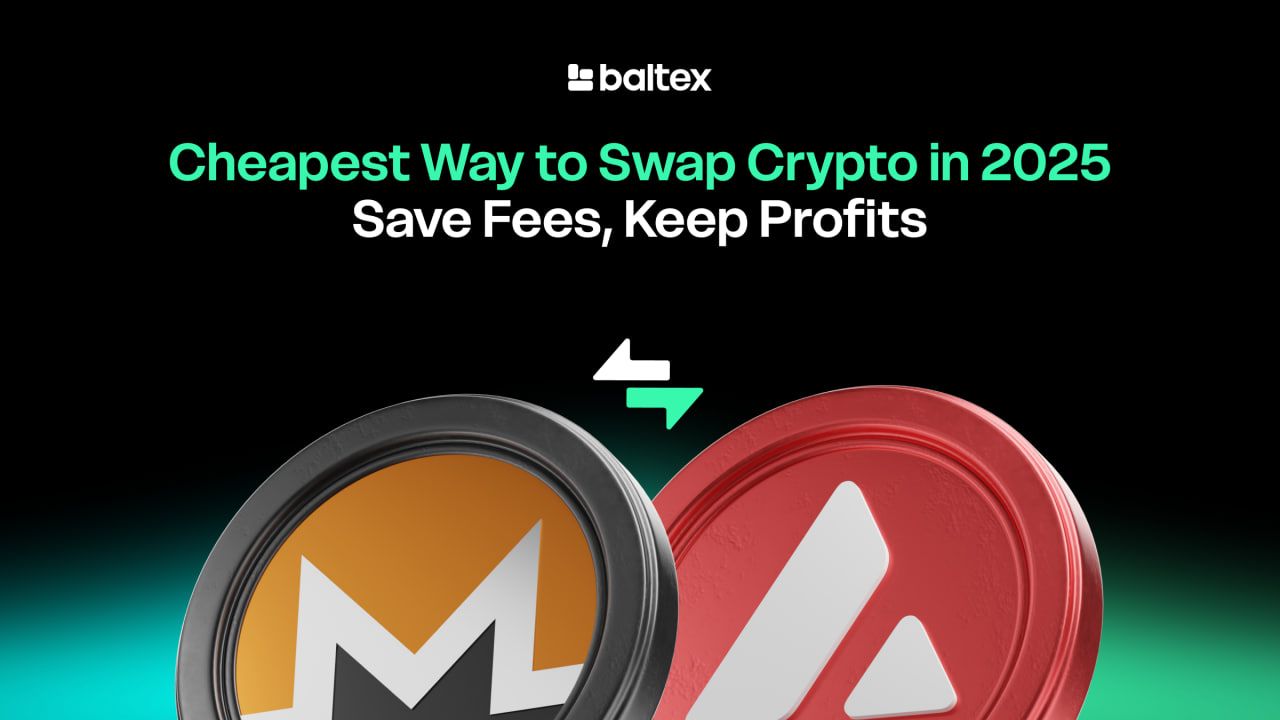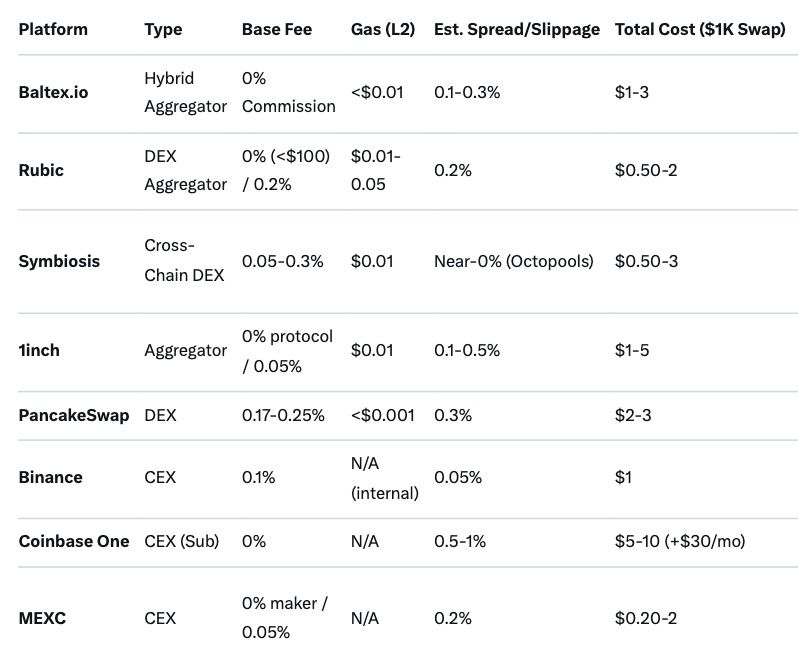
In 2025, swap crypto cheapest via DEX aggregators like Rubic (0% under $100) and zero-commission hubs like Baltex.io, slashing fees by 70-95% vs. traditional DEXs. Watch hidden costs: slippage (1-2%), spreads in "free" trades, and gas. Top picks: Symbiosis for no-slippage cross-chain, PancakeSwap for BSC lows. This guide compares platforms, uncovers traps, and maximizes your yields—saving $500+ yearly on $10K trades.
Crypto trading in 2025 is a fee minefield: Gas spikes, slippage bites, and "zero-fee" lures hide spreads that erode 5-10% of profits. With Ethereum's L2 boom and Solana's sub-second swaps, smart traders use aggregators and hybrids to cut costs without sacrificing speed or security. This 2,300-word SEO guide arms you with the cheapest methods, platform breakdowns, and pro tips. Whether bridging ETH to SOL or flipping memecoins on Base, keep more crypto in your wallet.
Swapping crypto isn't just about the headline fee—it's the total cost of ownership (TCO). In 2025, with $13B daily DEX volume, cheap means under 0.1% all-in, including gas, slippage, and spreads.
Core factors:
Per Koinly's 2025 analysis, aggregators like 1inch save 40-60% vs. solo DEXs by routing to deepest liquidity. For traders eyeing $10K monthly volume, that's $200-500 reclaimed.
"Zero-fee" sounds utopian, but 2025's reality is conditional bliss—often for makers, small trades, or stables. No platform is truly free; costs shift to spreads or premiums.
Top zero-fee contenders:
Caveat: X users rave about GalaSwap's "shockingly low" fees for GALA ecosystem, but ecosystem lock-in applies. True zeros shine for high-volume stables, saving 100% on protocol cuts—but verify spreads via simulators.
For versatile swaps, low-fee DEXs and CEXs dominate, undercutting 2024's 0.3% averages. Focus on L2-native or aggregator-routed for gas wins.
Key low-fee stars:
Aggregators amplify: Rubic's 0% under $100 on Solana, per X buzz. Pact Swap claims 95% fee cuts via bridgeless BTC/ETH.
We benchmarked 2025's top 8 by TCO on a $1K ETH-USDC swap (ETH L2). Data from CoinGecko, Koinly. Avg. slippage assumes volatility.

Verdict: Aggregators win for flexibility; CEXs for speed. Baltex.io edges with 0% commission on 10K+ assets.
Fees are the tip; icebergs like spreads and slippage sink profits. In 2025, volatility (BTC swings 5%/day) amplifies this—Token Metrics estimates 4.5% portfolio drag from rebalances.
X traders warn: "Zero fees? Check spreads—lost 2% on a 'free' swap". Always simulate: Platforms like Symbiosis preview TCO.
Cheap swaps flop if slow or insecure. 2025 metrics: <10s confirms, 99% uptime, audited contracts.
Pro: For $50K trades, execution trumps fees—poor fills cost 5x more.
Enter Baltex.io: 2025's stealth gem for fee-phobes. This hybrid aggregator delivers 0% commissions on instant, non-custodial swaps across 200+ chains (ETH, Solana, TON, Base) and 10K+ assets—from BTC to memes.

Why cheapest?
For traders: API for bots, NFT hiding. Drawback: Newer, so test small. Baltex.io isn't just cheap—it's your one-hub fortress.
Review: Baltex.io Deep Dive
Annual win: $1K trader saves $300+.
AI routing (predictive slippage) and chain abstraction (NEAR-style) promise sub-0.01% TCO. Regs like MiCA boost compliant lows, but oracle risks linger. Messari: Aggregators hit 60% DeFi volume by year-end.
On X, Pact Swap's bridgeless hype signals the shift: "95% cheaper than legacy".
DEX aggregators like Rubic (0% small trades) or Baltex.io (zero-commission multi-chain). Total cost: <0.2% with L2.
Conditional: Coinbase One for subs, B2C2 for stables. But spreads add 0.5-1%.
Use aggregators (Symbiosis near-0%), split large orders, trade high-liquidity pairs.
Spreads (0.2-1%), slippage (1-2%), gas ($0.01-15). Preview always.
For multi-chain: Yes—0% fees, 200+ networks, instant execution.
2025's cheapest swaps aren't about rock-bottom fees alone—they're holistic: Aggregators like Rubic and hubs like Baltex.io blend zero commissions, low slippage, and seamless execution to lock in your gains. Ditch the drains; a $10K portfolio thrives fee-free.
Start today: Test Baltex.io for your next flip.